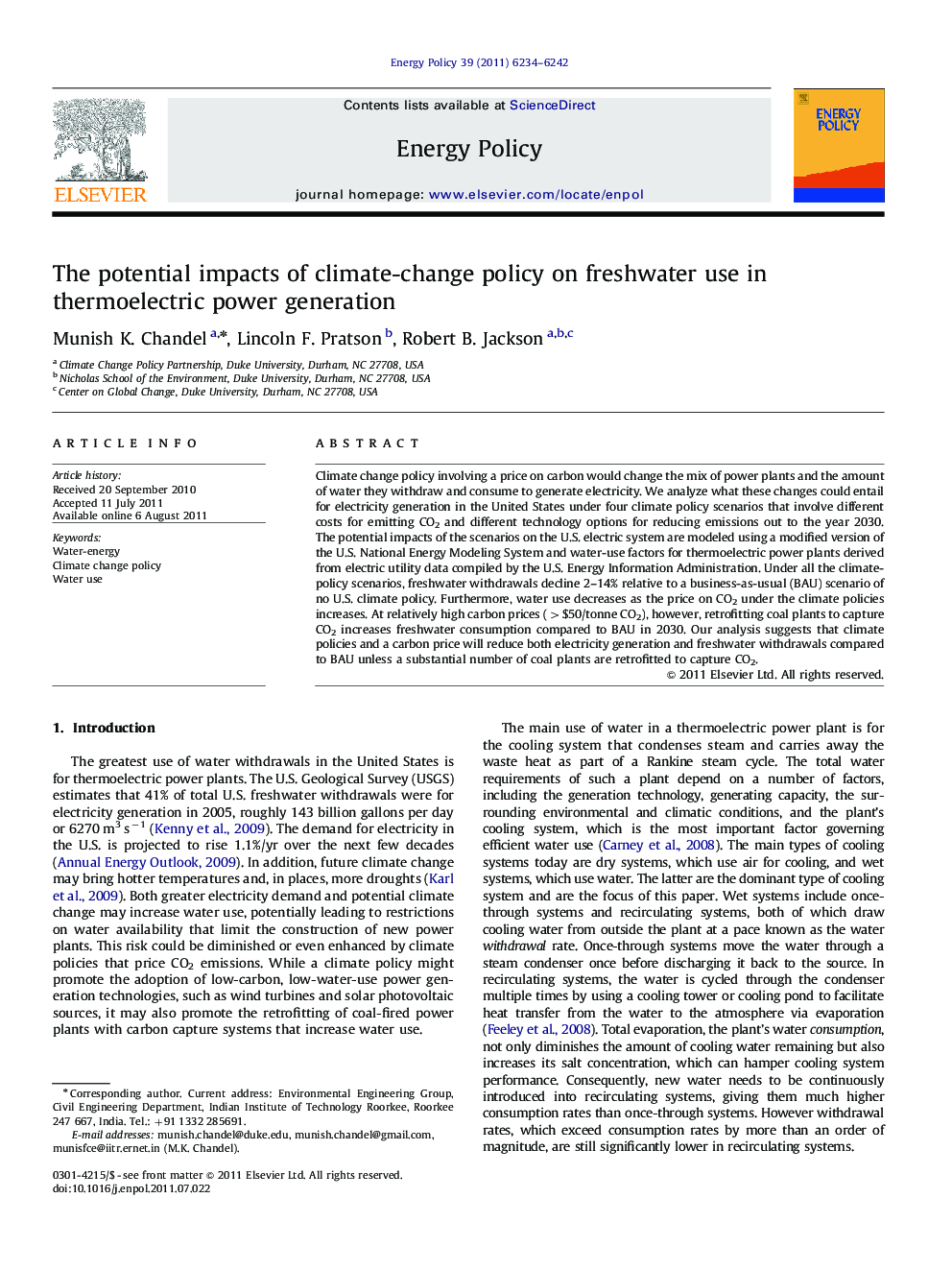| Article ID | Journal | Published Year | Pages | File Type |
|---|---|---|---|---|
| 993063 | Energy Policy | 2011 | 9 Pages |
Climate change policy involving a price on carbon would change the mix of power plants and the amount of water they withdraw and consume to generate electricity. We analyze what these changes could entail for electricity generation in the United States under four climate policy scenarios that involve different costs for emitting CO2 and different technology options for reducing emissions out to the year 2030. The potential impacts of the scenarios on the U.S. electric system are modeled using a modified version of the U.S. National Energy Modeling System and water-use factors for thermoelectric power plants derived from electric utility data compiled by the U.S. Energy Information Administration. Under all the climate-policy scenarios, freshwater withdrawals decline 2–14% relative to a business-as-usual (BAU) scenario of no U.S. climate policy. Furthermore, water use decreases as the price on CO2 under the climate policies increases. At relatively high carbon prices (>$50/tonne CO2), however, retrofitting coal plants to capture CO2 increases freshwater consumption compared to BAU in 2030. Our analysis suggests that climate policies and a carbon price will reduce both electricity generation and freshwater withdrawals compared to BAU unless a substantial number of coal plants are retrofitted to capture CO2.
► We analyze the impact of climate change policy on water use for electricity generation. ► Water use decreases with an increase in CO2 allowance price. ► Retrofitting of coal plants with CCS could increase water use considerably.
